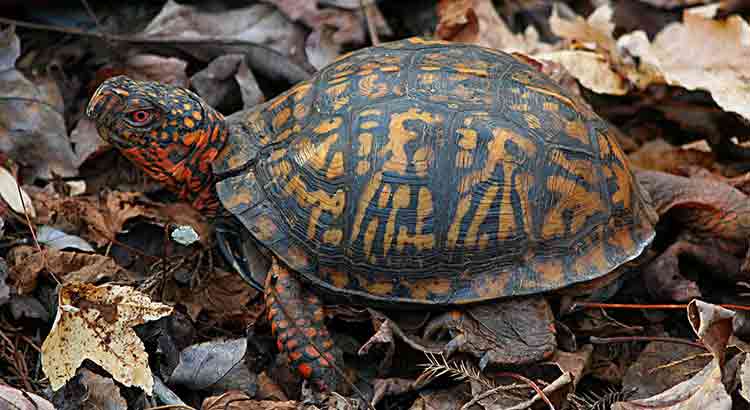Turtles are very shy creatures, and when you see them in the wild they will usually be retracted in their shells, and you don’t usually see the entirety of their bodies, so what about their tails, do they have a tail that they hide?
Do box turtles have tails? Yes, box turtles have tails, they are usually very small, and this makes them hard to see, especially when the box turtle hides in its shell.
So even if they are quite small they do have a tail, and this tail is not just for decorative purposes, it helps with a lot of vital and surprising things. But before we talk about this let’s see how a box turtle looks like.
How Do the Tails Look
It is said that a picture is worth a thousand words, so let’s start with a picture.
As you can see the tail is not very big and is covered in skin and scales that are the same color as the rest of the body.
The tail in the picture above is from a male box turtle. Female turtles usually have a slightly bigger tail. But again, this is not for esthetics, they also help them with a few things.
How Are They Using Their Tails
On the underside of the tail, you will find the cloaca.
The cloaca has 4 important roles: execration, urination, reproduction, and breathing. Turtles use only one orifice for those things and that is the cloaca.
The cloaca can be found in other animals as well, they are not exclusive to turtles. Most birds have a cloaca, some fishes, and a few mammals. The cloaca can be a little different for other animals, but those that have it will generally use it for the same purpose, with the exception of breathing, not too many animals that have a cloaca use it for breathing, mainly because they don’t have any reason to do it.
For turtles, the cloaca consists of the Urodeum, the central part of the cloaca that receives urine from the ureter, Proctodeum, the back ectodermal part of an alimentary canal, and the Coprodeum.
Cloacas are also used to lay eggs, when turtles lay their eggs, they expel them through the cloaca.
Here is a video of a turtle laying eggs through its cloaca, in the video you can see clearly that the eggs leave the turtle’s body at the base of the tail.
If you own an aquatic turtle and you want to see your turtle using its cloaca to breathe, you can easily do so. Just look at the back end of the turtle when it’s swimming around, if you spend 15 minutes looking you have pretty big chances of seeing it in action.
If you want to see a cloaca, but you don’t own a turtle, here are a couple of links that will show you a cloaca up close. I chose not to post them as pictures because they can be a little gross, but if that is not a problem for you, here are the links:
As you can see in the picture above the cloaca is basically the turtle’s butt. This is the place from where turtles urinate, defecate and lay eggs. And also one of the places from where they breathe.
The cloaca works in a similar way to the lungs, when the turtle is inside the water the cloaca will act like a pump that will suck water inside and after it gathers all the oxygen from it, it will expel the water out, and then it will start over. Due to the way things are arranged on the inside of the turtle this process is less exhausting than normal breathing.
Conclusion
So box turtles have tails, even if they are very small, and can barely be seen on wild turtles, due to the fact that they tend to hide in their shells when they see people.
I hope this article answered your questions about box turtle tails. But in case you have any questions left, you can always leave them in the comment section and I will answer them as soon as possible.


